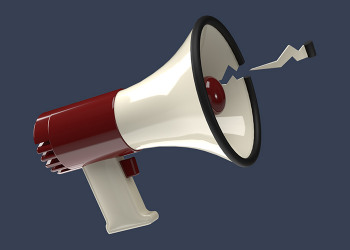The Oracle of Usama Bin Laden
"Al-Qaida" terror network and "small world" hypothesis
Despite all the resolve put on display, the military action against the alleged brains behind the attacks of September 11th stands on shaky ground. After all, the search for the persons responsible is far from over. The attacks of New York pose special difficulties in this respect: while news agencies' fax machines regularly brim over with letters claiming responsibility after comparable incidents, no one wanted to be involved this time. Even the ominous Usama Bin Laden, who was quickly identified as the main suspect by American intelligence, contended his innocence - and passed the responsibility onto God (not without showing some gratitude, though).
Yet the White House continues to speak of "growing", "conclusive" evidence against Bin Laden. The British government, too, believes that Bin Laden's involvement is beyond doubt. There are however no clearly attributable instructions or documented command structures upon which to base such an assessment. Rather, the evidence mainly consists of the relationships that the alleged hijackers maintained with Bin Laden's "Al-Qaida" network. Through one, two or more intermediaries, each of the suspects seems to have had a connection to the man in Afghanistan.
Yet what exactly does it mean to say that someone has a relationship with someone else via two or three intermediaries? Relatively little, if we are to believe the results of recent research into social networks. According to the so-called "small world" hypothesis at least, networks of acquaintances generally connect any two people by no more than five to seven intermediaries. American psychologist Stanley Milgram tested an interesting application of this theory. He asked randomly selected participants in the Midwest to help forwarding a letter to a Boston stockbroker. They were instructed to pass the letter on to an acquaintance who would be closer to the target recipient. This person was then asked to do the same until, eventually, someone would know the stockbroker and give the letter to him. Almost all of the letters arrived - and on the average they didn't need more than six intermediaries.
A comparably interesting network is unveiled by a computer program known as the Oracle of Kevin Bacon, which is available on the Internet. For any chosen actor, it computes a "Bacon Number" that indicates the relationship with the American actor Kevin Bacon. Someone who acted with Bacon in a movie gets a Bacon Number of one; someone who played with someone else who played with Bacon in another movie gets a Bacon Number of two, and so on. The results show that the complete universe of American actors (the database contains the names of 464,194 actors) is only a few steps away from Mr Bacon: the average Bacon Number is 2.9. Nonetheless, Kevin Bacon isn't actually at the center of Hollywood. That is held by Christopher Lee, whose analogously calculated average "Lee Number" is less than 2.6.
In the case of actors - and scientists alike, as the Erdös Project - the average distances are unusually small. But even under more realistic circumstances, mathematical simulations show that already a few random but far-reaching contacts turn a network of millions into a "small world". Then, no more than "six degrees of separation" stand between any two points in the network. Practically speaking, that means that it will probably need anything between five and seven persons to construct a network between Mr Average and George W. Bush.
Even given the difficulties in finding the target recipient, only a few more steps will be necessary to reach Usama Bin Laden. But no worry: apparently, the FBI does not yet have an "Oracle of Usama Bin Laden" available in order to compute everyone's "Bin Laden Number". Therefore, such loose connections will not have any consequences - for the time being, that is.
